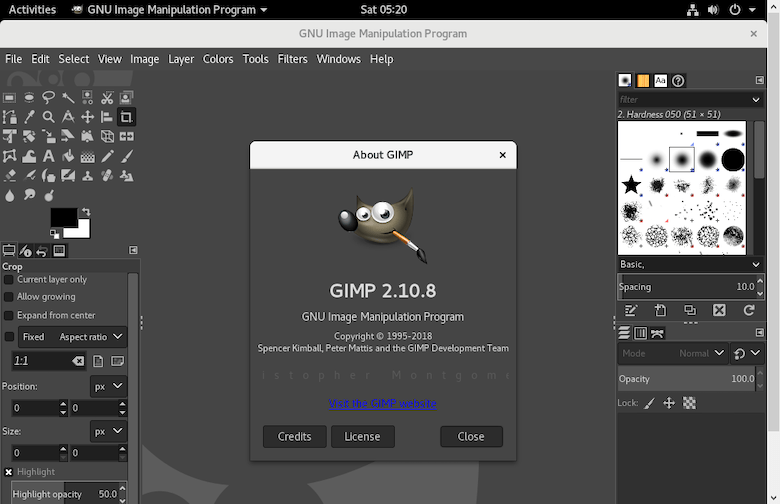How To Install GIMP on Fedora 39

In this tutorial, we will show you how to install GIMP on Fedora 39. GIMP (GNU Image Manipulation Program) is a powerful and versatile open-source image editor that rivals proprietary software like Adobe Photoshop. With a vast array of features including layers, filters, and a customizable interface, GIMP has become a go-to choice for professionals and enthusiasts alike.
This article assumes you have at least basic knowledge of Linux, know how to use the shell, and most importantly, you host your site on your own VPS. The installation is quite simple and assumes you are running in the root account, if not you may need to add ‘sudo‘ to the commands to get root privileges. I will show you the step-by-step installation of the GIMP image editor on a Fedora 39.
Prerequisites
Before diving into the installation process, let’s ensure that you have everything you need:
- A server running one of the following operating systems: Fedora 39.
- It’s recommended that you use a fresh OS install to prevent any potential issues.
- You will need access to the terminal to execute commands. Fedora 39 provides the Terminal application for this purpose. It can be found in your Applications menu.
- A network connection or internet access to download the GIMP package.
- A non-root sudo user or access to the root user. We recommend acting as a non-root sudo user, however, as you can harm your system if you’re not careful when acting as the root.
Install GIMP on Fedora 39
Step 1. Before installing any new software, it’s always a good practice to ensure that your system repositories are up-to-date. Open a terminal and run the following command:
sudo dnf clean all sudo dnf update
Step 2. Installing GIMP on Fedora 39.
- Method 1: Install GIMP via DNF Package Manager.
The DNF package manager is the default package management tool in Fedora, making it a convenient choice for installing GIMP. Follow these steps:
sudo dnf install gimp
If you require additional plugins or extensions, you can install them using the dnf groupinstall command:
sudo dnf groupinstall "GIMP Desktop"
For developers working on GIMP-related projects, you can install the GIMP development package by running:
sudo dnf install gimp-devel
Verify the successful installation by checking the version of GIMP:
gimp --version
In some cases, you might encounter dependency issues during the installation process. If this happens, try running the following command to resolve any missing dependencies:
sudo dnf install --skip-broken gimp
- Method 2: Install GIMP via Flatpak.
Flatpak is a modern package management system that provides a sandboxed environment for applications, ensuring better security and stability. First, ensure that Flatpak is installed on your Fedora system. If not, you can install it by running:
sudo dnf install flatpak
Next, add the Flathub repository, which hosts a vast collection of Flatpak applications, including GIMP:
flatpak remote-add --if-not-exists flathub https://flathub.org/repo/flathub.flatpakrepo
With the repository added, you can now install GIMP using the following command:
flatpak install flathub org.gimp.GIMP
To launch GIMP installed via Flatpak, use the following command:
flatpak run org.gimp.GIMP
To keep GIMP updated when new versions are released, simply run:
flatpak update org.gimp.GIMP

Congratulations! You have successfully installed GIMP. Thanks for using this tutorial for installing the GIMP image editor on your Fedora 39 system. For additional or useful information, we recommend you check the official GIMP website.